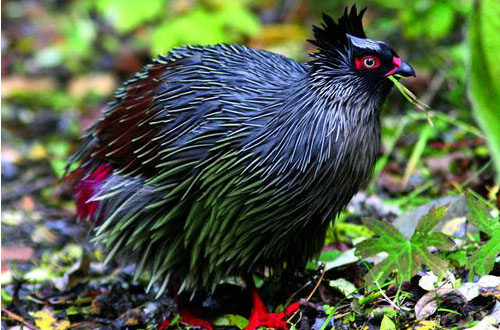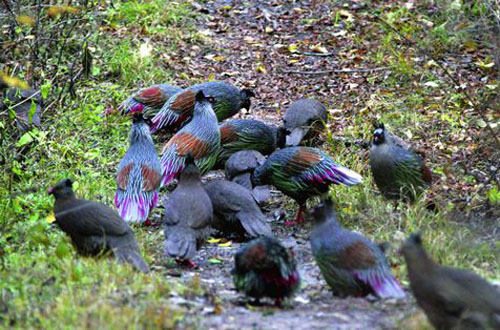The colourful blood pheasants are the least “pheasant-like” of the pheasant-family, more resembling partridges in shape and size. They are listed in category II in the Red Data Book of China, that is, less endangered than the Chinese grouse. In contrast to the Chinese grouse, they are extremely shy of humans in our study area and have a well-developed social behavior. From a blind, we studied the interesting sand-bathing behaviour at sites traditionally used by flocks or broods. One of our most interesting findings was that males guarded broods or single females while their bathing. The brood did not appear before the female had prepared the sand-bathing site and a guard was watching. The bathing procedure involved pecking the ground to loosen the substrate, scraping with the feet to form a deeper bathing hollow, and then turning the body and rubbing the neck and head against the soil followed by beating of the wings. During the impressive wing-beating, the bird distributes dust and sand throughout the whole plumage. The function of sand-bathing is still being debated, but regulation of the fat content of the feathers and reducing feather parasites may be possible reasons.

A beautiful male blood pheasant

Female blood pheasant is relatively bleak

The blood pheasant may aggregate to flocks of more than 30 individuals in autumn and winter
